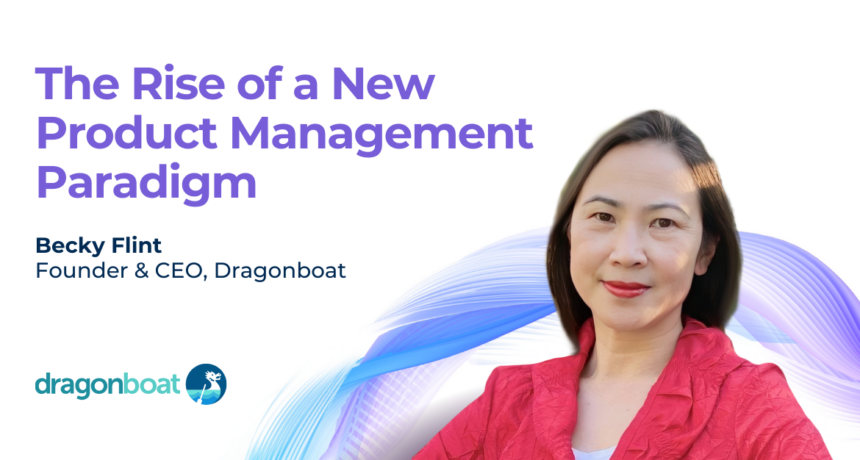We are at an exciting time where a well-kept secret of some of the best companies has emerged and spread to more and more organizations. The world has finally embraced the full scope and impact of product management as a driver of revenue and a crucial determinant in a company’s success. Before we can fully appreciate this new paradigm, we must first understand the path that led to the rebirth of product management–the evolution of product management from “technologists” to “operators.”
Product Management 1.0: The Technologists
There was a time when most believed that product managers were just “technologists” – they partnered with engineering and built products using the latest and greatest technology. Sadly, today, there are still quite a few companies that apply this approach. It’s no wonder they insist engineering tools can be extended for product management purposes. But applying great technology is only one piece of the puzzle. To deliver on the promise of product excellence, there’s more to consider.
Product Management 2.0: The Makers
For those who better understood the calling, they broadened their expectations of what product management should entail. As part of this philosophy, product managers were viewed as “product makers” or “product builders.” They became more customer-centric, allowing customer feedback and ideas to shape their roadmaps. And roadmaps themselves became critical to coordinating the efforts of teams. Instead of focusing solely on their partnership with engineering, design and data analytics entered the product practice.
While getting customer insights and building roadmaps is important for making products customers love, is it enough? Or is it still too narrow of a focus?
Then I ask… Why do some product managers fail in one company and thrive in another?
“Makers,” as an embodiment of product management, still only reflects a portion of the full potential impact of the role. Tools built for roadmapping or “product making” are also not enough, as they are designed for only part of what truly great product management should and needs to be.
Product Management 3.0: The Operators
Finally, the secret is out: the best product managers are “product operators” responsible for driving the growth and trajectory of a business. In this new paradigm, their influence is far greater along the journey of turning ideas into outcomes.
“Product leaders are business leaders and operators. They are expected to drive enduring values.”
Robin Chiang, Director, Product Operations, Google
Product management has to partner with a broader set of functions—actually 80% of a company. In addition to collaborating with engineering, design, and data analytics, product management has built bridges with everyone from executive leadership to product operations, and those throughout the business. Think go-to-market teams, legal, compliance, and more.
“PMs are like general managers in training. Be transparent on strategic decisions – ‘Where is your money going?’”
Dickson Chu, CEO, Board Member, Fintech Advisor
Product management must facilitate coordination across a variety of operating cadences. How strategies are formed and deployed, opportunities are accessed and capitalized on, resources are allocated, execution occurs, results are monitored, and so much more.
“In my first month at Toyota, I met 1,400 people… because product management is very cross functional. I need to understand their workflows and how to collaborate with them.”
Vanessa Garber, CPO of Mobile Apps, Toyota
To support these coordinated efforts, they have to leverage many data points to make effective product portfolio investment decisions, adapt to competitive threats or market dynamics, and take action all while maintaining the delicate balance between cross-functional collaborators, their cadences, and the company’s needs.
Supporting the New Product Management Paradigm
The product operating model consists of a broad range of operations, from strategies and outcomes to opportunities and customer insights, as well as, resource allocation, PDLC, product excellence, roadmaps, and value delivery. This means product managers must effectively engage and collaborate with a broad range of partners, from execs to their peer PMs to engineering, go-to-market teams, and other operations. The best product managers are operators, helping to run and optimize their product operating model to be effective.
However because the product operating model is complex and constantly evolving, it needs a hub.
You can’t win a war using the Pony Express for communication if your opponent uses satellites, right?
Dragonboat is the only modern Strategic Portfolio Management Platform purpose-built to help product leaders accelerate outcomes via effective product portfolio management and delivery. It supports the data, interaction, and decisions of all these participants, from deploying and monitoring strategies and outcomes between executives and teams to evaluating product ideas and market opportunities with customers and revenue teams, to allocating resources and making trade-offs with engineering or resource leaders, as well as establishing and improving the PDLC from idea to outcome.
Categories
Product Leadership | Product Management | Product Operations | Product Portfolio Management
Share on Social



